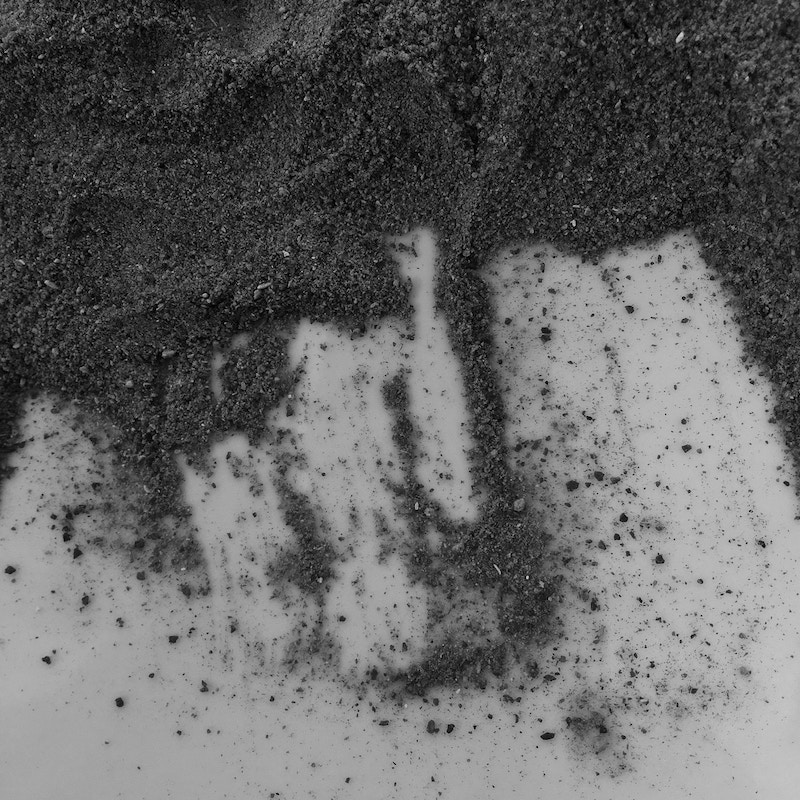Black Mass Recycling
Black Mass recycling is a process that aims to recover valuable metals such as cobalt, nickel, and lithium from discarded lithium-ion batteries. While recycling of these batteries has gained significant attention in recent years, the recycling of Black Mass presents unique challenges.

What is Black Mass?
Black Mass is a dark, powdery substance that remains after the initial mechanical and chemical treatment of discarded lithium-ion batteries. The substance is called "black" because of its dark color, and "mass" because it is a concentrated mixture of various metals and compounds. The composition of black mass can vary depending on the specific type of battery being recycled, but it typically it contains a high concentration of valuable metals, such as cobalt, nickel, lithium, copper and aluminum, in oxide or carbonate form. The black color of the mixture is due to the carbonaceous materials remaining from the electrodes and electrolyte.
How do you make Black Mass?
To produce black mass, lithium-ion batteries undergo a series of processing steps designed to extract the valuable metals they contain. The process begins by collecting and fully discharging the batteries to ensure safety. These discharged batteries are then mechanically shredded, breaking them down into smaller components. During this shredding process, base metals such as copper, aluminum, and steel are separated, leaving behind a mixture of fine particles known as black mass. This black mass predominantly contains valuable materials like lithium, cobalt, nickel, and manganese, which are essential for battery production.
Refining of Black Mass
There are two main methods to refine black mass further: pyrometallurgy and hydrometallurgy. In pyrometallurgy, the shredded material is subjected to high temperatures, which burns off unwanted organic compounds, leaving behind a metallic residue. However, this method can produce hazardous emissions and waste. Hydrometallurgy, on the other hand, involves using chemical solutions to dissolve the metals from the black mass. This solution-based technique is more environmentally friendly, as it avoids high temperatures and reduces energy consumption.
Once the valuable metals are dissolved, they are separated through processes such as solvent extraction or ion exchange. The purified metals are then recovered through methods like electroplating, ready to be reused in new batteries, thus closing the recycling loop.

Why is the recycling of Black Mass so difficult?
Black mass recycling is a complex, challenging and typically expensive process that requires specialized knowledge and expertise.
The heterogeneity and chemical complexity of black mass makes it difficult to design a process that is effective at extracting all of the desired metals. Some examples of the challenges faced in hydrometallurgy:
- The metal sulfides and oxides present in black mass can have a wide range of oxidation states, which can complicate the extraction process. The extraction process must be designed to account for the variability in the oxidation states of the metals present in the black mass.
- Lithium-ion batteries can contain a variety of contaminants that can interfere with the hydrometallurgical processing and reduce the quality of the recovered materials. Contamination can also affect the efficiency of the chemical reactions used to extract the metals, which can result in lower yields and increased costs.
- The metals present in black mass can compete for solvent during the extraction process. For example, if there is a high concentration of iron in the black mass, it may compete with other metals such as cobalt and nickel for solvent, reducing their extraction efficiency.
The Solution
Sensmet µDOES® is a technology that allows for real-time quantification of metal concentrations in black mass solutions during hydrometallurgical recycling.
The benefits of Sensmet µDOES® in black mass recycling include:
- Real-time knowledge of the process status: Sensmet µDOES® provides real-time information on the metal concentrations in various stages of the black mass hydormetallurgical processes. This allows for better process control and optimization, and prevents the risk of wasting an entire batch due to abnormalities or undesired process progress.
- Improved process efficiency: With real-time knowledge of the metal concentrations and process progress, adjustments can be made to the process to improve efficiency and minimize waste. · Improved product quality: Sensmet µDOES® enables better control over all the metal concentrations during the entire recycling process, leading to higher quality and purity of the recovered metals.
- Reduced environmental impact: By improving efficiency and efficacy, Sensmet µDOES® can help to reduce waste and resource consumption.
- Cost-effectiveness: Sensmet µDOES® technology is cost-effective compared to traditional laboratory-based methods. It reduces the need for expensive and time-consuming laboratory analysis, which can significantly reduce the overall cost of the recycling process.
- Ease of use: Sensmet µDOES® is easy to use, and the real-time data is available to the operator in a user-friendly interface. This allows for quick decision-making and process adjustments based on the real-time data.
Conclusion
As the demand for lithium-ion batteries continues to grow, Black Mass recycling will play a crucial role in ensuring the sustainability of the battery industry.
Sensmet µDOES® technology is an important tool for optimizing the hydrometallurgical recycling process of black mass from lithium-ion batteries. It provides real-time knowledge of the process status, improves efficiency, product quality, and reduces the environmental impact of the recycling process.
To keep up to date on the latest news and trends regarding the recycling of black mass of Li-Ion batteries, consider subscribing to our newsletter or joining the Black Mass Recycling-group on LinkedIn.
Our clients have called it a game changer
- Ensure that the black mass recycling process is optimised. Monitor the Ni, Co, Mn, and Li removal in real time. The measurement is precise, and measurement ranges are highly dynamic.
- Measure concentrations of impurity metals such as Cu, Fe, Al, Zn, Ca, Na, K, and Mg.
Additional Reading:
Breakthrough technology for battery metal production and recycling processes

